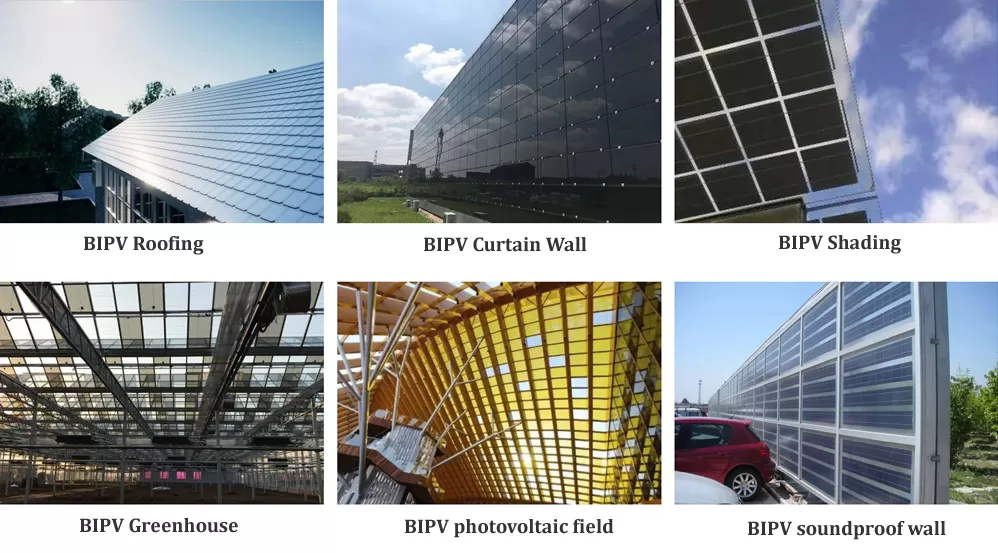Click me to show description about [ Building Integrated Photovoltaic ]
Building Integrated Photovoltaics (BIPV, Building Integrated Photovoltaics) is an innovative mode of integration of solar energy technology and architectural design, which realizes the triple effect of power generation, building materials, and aesthetic function by using PV modules directly as building envelope or functional components. In the classification of project services, BIPV mainly covers three kinds of construction scenarios:

Building Envelope Integration
BIPV modules are used in building facades, curtain walls, light roofs and fences instead of traditional building materials. For example, Amazing Power's CdTe thin-film glass curtain wall project not only meets the demand of building lighting, but also realizes an average annual power generation of more than 100 kWh/m² through the characteristics of low-light power generation. Such projects are suitable for commercial complexes, transportation hubs and other public buildings, which have both energy-saving benefits and artistic design value.
Rooftop Photovoltaic System
Rooftop PV systems adopt lightweight and flexible BIPV roofing solutions, such as LONGi Green Energy's “LONGTOP” series products, which integrate monocrystalline silicon modules with waterproofing layers to achieve an installed capacity of 12MW in Tesla's Shanghai Mega Factory, generating an annual power generation of 12 million kWh and saving 30% of installation space compared with traditional distributed PV.
Functional PV components
Functional PV components include PV sunshade louvers, canopies, parking sheds and other composite products, such as CITIC Bo's wave-shaped PV carport at the Xiongan high-speed railway station, which employs double-glass modules and steel structure integration technology, with an installed capacity of 6MW, and an annual carbon dioxide emission reduction of more than 5,000 tons, while creating architectural sunshade, light-conducting and other additional functions.
The BIPV project relies on high-efficiency thin-film batteries, intelligent microgrids, BIM digital twins and other technologies to promote the transformation of the building from an energy consumer to a zero-carbon unit of “energy production + energy storage + energy control”.
Brice Solar can design and build customized BIPV projects according to the above different scenarios, welcome to contact us.

